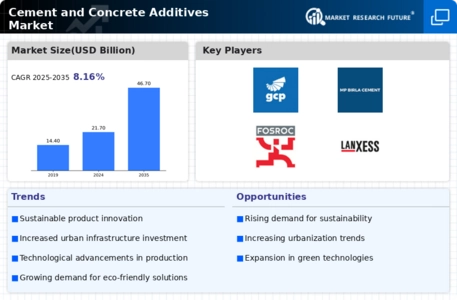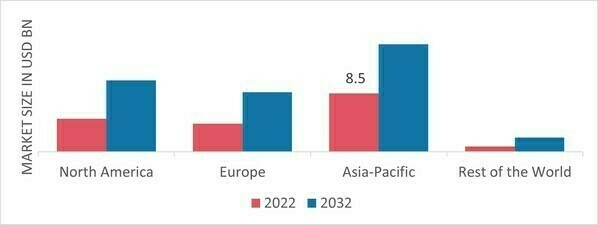Market Share
Cement and Concrete Additive Market Share Analysis
The construction sector is undergoing a rapid transformation, propelled by the burgeoning era of digitalization. This wave of innovation has led to the development and implementation of cutting-edge technologies, particularly in developed markets. Notably, Computer-Aided Design (CAD) and Computer-Aided Manufacturing (CAM) techniques have gained prominence, revolutionizing the construction landscape by enabling the printing of concrete structure components and entire buildings. Within this realm of technological advancement, fiber additives are emerging as key contributors, enhancing the capabilities of high-performance tools used in 3D construction printing.
The utilization of fiber additives in the manufacturing process of tools for 3D construction printing is driven by their ability to improve mechanical performance and reduce the drying shrinkage of printed concrete. This improvement is achieved through maintaining a low water-to-cement ratio, a critical factor in ensuring the quality and durability of the printed structures. As 3D construction printing gains momentum as an innovative and efficient construction method, the demand for fiber concrete additives is poised to witness significant growth.
Sika AG, a major player in the global cement and concrete additives market, exemplifies the industry's commitment to embracing technological advancements. In April 2016, Sika AG introduced 3D concrete printing technology, leveraging concrete additives, particularly fibers, in the printing tools. This move marked a pivotal moment in the integration of fibers in the 3D construction printing process, underscoring their role in enhancing the efficiency and structural integrity of printed concrete components.
Moreover, the rise in the construction of complex building structures and smart buildings in developed markets aligns seamlessly with the broader trend of growing digitalization on a global scale. This confluence of factors presents lucrative growth opportunities for manufacturers of cement and concrete additives, particularly those specializing in fiber additives. The demand for advanced additives capable of meeting the specific requirements of 3D construction printing and supporting the development of smart buildings is on the rise.
The concept of smart buildings, characterized by intelligent systems and connectivity, has gained momentum as a hallmark of modern construction. These buildings leverage digital technologies to enhance efficiency, sustainability, and user experience. As the construction industry increasingly adopts smart building practices, the demand for innovative construction materials, including specialized additives, is set to soar.
The advantages offered by fiber additives extend beyond their application in 3D construction printing. Fiber-reinforced concrete has proven to be a valuable solution in traditional construction as well, providing enhanced tensile strength, durability, and crack resistance. As the industry pivots toward more sustainable and resilient construction practices, the versatility of fiber additives positions them as a critical component in meeting these evolving demands.








Leave a Comment